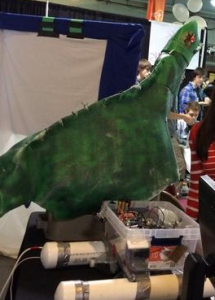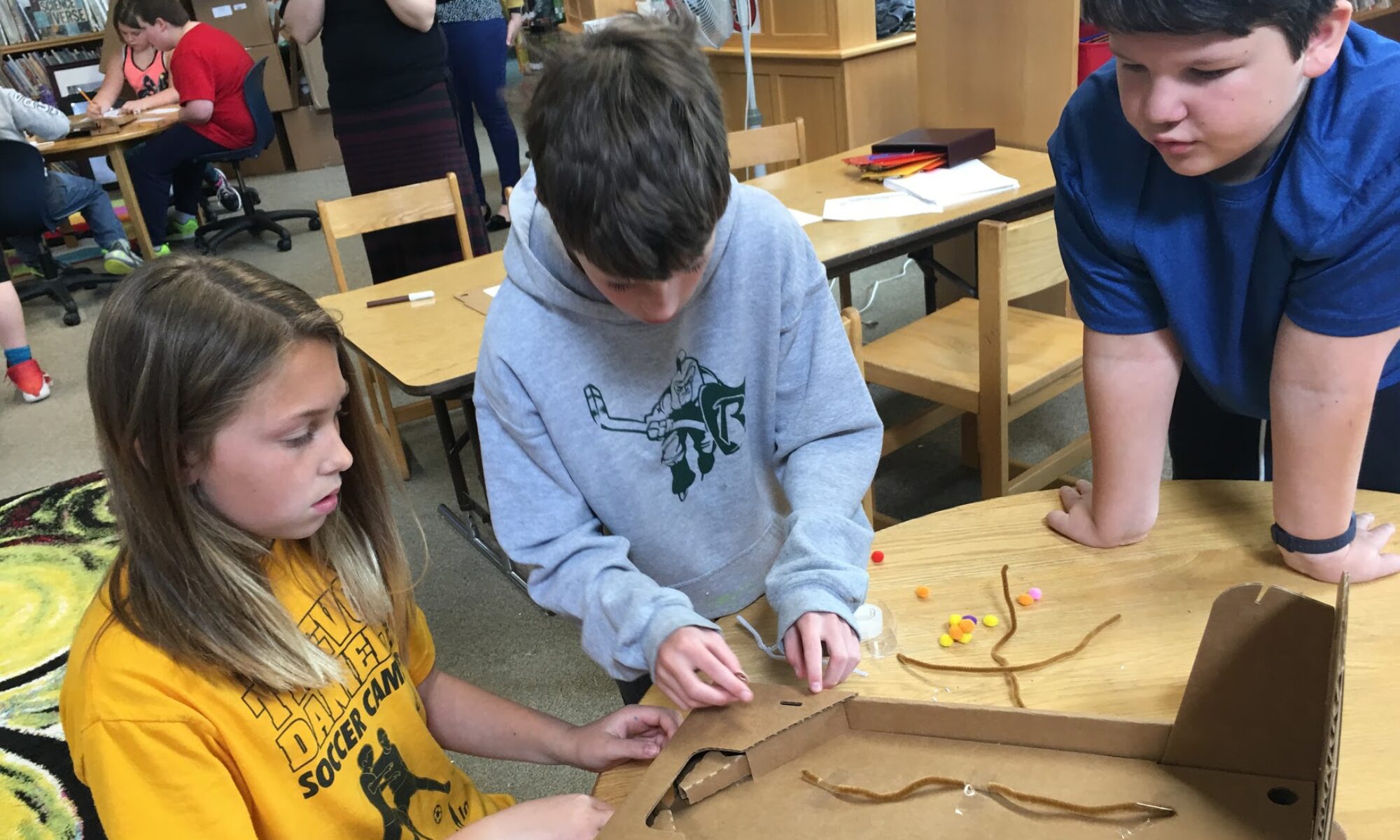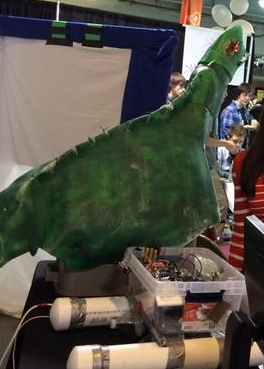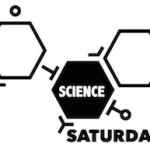At TechJam this past autumn I was fortunate to run into a number of student groups who were there to show off projects. That forum, and others like it, gives learners a space to share, interact, and learn from each other. One group I met was from Big Picture South Burlington (@BigPictureSB), a community of learners working in the Big Picture model within South Burlington High School. Big Picture is all about authentic real-world learning, and this group of students had chosen to enter the ChampBot Challenge at the Champlain Mini Maker Faire. Talking with the students and their advisor Jim Shields during and after got me thinking about a number of issues related to collaboration, constructivism, and student choice in STEM education.
First, a little bit of background on the ChampBot challenge.  It required teams to create remote-controlled robots in the image of our beloved Champ that could maneuver through an aquatic obstacle course. Extra points were awarded for being able to place an object into a target, igniting a flammable target, or submerging and resurfacing your robot. Of the 7 teams that took the challenge, only two were able to complete it this year.
It required teams to create remote-controlled robots in the image of our beloved Champ that could maneuver through an aquatic obstacle course. Extra points were awarded for being able to place an object into a target, igniting a flammable target, or submerging and resurfacing your robot. Of the 7 teams that took the challenge, only two were able to complete it this year.
How did students from Big Picture South Burlington get involved? From Jim:
“I have 14 students in my advisory, and there are 28 students in our school. This project was one of three projects open to students for “Orientation Term.” The goal of orientation term is to familiarize students with project-based learning by modeling what it is like to do a high quality project. Students from both advisories got to select one of the three options, so the 9 students in the ChampBot group selected it as the option that interested them most.”
If you’ve been reading Science Saturdays for a while, you may remember a previous post on robotics and be able to predict where I am going with this. Constructionism!
The nature of the STEM fields gives students the opportunity not only to build their own knowledge, but also (and perhaps more importantly) to build and experiment in the real world. Through the process of creating this bot, students conceptualized, designed, fabricated, programmed, debugged, and worked around. This was due to the real-world and open nature of the project.
The loosely defined problem allowed them the flexibility to drive their own learning, and the requirement to have a deliverable product pushed them to act. Thinking about the different types of learning going on during a project like this reminded me of Tony Wagner’s seven survival skills (video). These students were engaged in building knowledge and skills that are valuable to them now, and will be valuable to them in the future.

Of course, the progress of the project was not without difficulties. According to Jim, the team divided into a number of different squads, and “while this allowed students to gravitate toward their interest (aesthetics vs programming, for example), the squads didn’t communicate well with one another, which created setbacks.”
Also, students engaged at different levels, with some taking on a lot of responsibility while others contributed less or were more easily discouraged by the difficulty level of the project. These are challenges that are common when a heterogenous group of students work collaboratively on a big project.
There were also challenges around the timeline, which is common when dealing with external constraints.
So what can we take away from these students’ experience? Here are some of the things that the students would do differently next time:
- Take more time
- More working together
- Make a schedule
- Make a decision and planning process
- Conduct field test 10 days before the event (instead of 1 day)
- Chose an easier competition
- Build a robot without a competition
In these recommendations we can see that they are conscious of the challenges that they encountered, and were able to reflect and propose solutions. This project also resulted in students further engaging in STEM fields, with one student getting more involved with 3-D design and printing, and the main programmer taking her growing knowledge of Arduino technology to the next level by working with Generator. Many students are also looking forward to competing in the competition next year.
Large collaborative projects set in the real world allow students the opportunity to authentically engage not only with their learning, but also with challenges that they will continue to encounter in their school, personal, and professional lives. As work becomes more and more collaborative in nature, giving students the opportunity to encounter these issues early on allows them to develop the tools to solve these problems. Not only did they learn through constructing their robot, they also learned through constructing their experience.
A big Thank You to Jim and his students at Big Picture South Burlington for sharing this project and their reflections. If your students are engaged in an authentic project, or another type of innovative learning experience, let us know so that we can write about it!
One last thing: I linked to it up above, but I wanted to make one more plug for Dynamic Landscapes. Proposals are due February 21, and the conference happens May 21 and 22. From their website: “We are especially interested in great student learning through doing, making and creating. Creations for authentic audiences, maker faire projects, demonstrate projects you’ve done with students, show their work, advice you have on how the project worked and what you’d change next time.” That sounds familiar… I had the opportunity to present and hands-on session last year with some students from Edmunds Middle School, and was glad to see how those students transformed into experts in order to teach a room full of adults.




Robotics, PBL, and collaboration http://t.co/rXyyjH2VhN
Robotics, PBL, and collaboration http://t.co/wJBrbK3NUq via @innovativeEd @BigPictureSB
Thanks for sharing the student reflections from this project. It reminded me of the type of comments I saw from my students when I was in the classroom full time. The learning that happened during the PROCESS that these students went through will become ingrained in them as one of the most memorable and valuable experiences from hight school.
Robotics, PBL, and collaboration – Innovation: Education http://t.co/7DMIuyPUdG
Robotics, PBL, and collaboration http://t.co/m5YAtHkZtW
Robotics, PBL, and collaboration http://t.co/kZIdsWfP0D @BigPictureSB #champbotchallenge #stem
RT @mwolofson: Robotics, PBL, and collaboration http://t.co/wJBrbK3NUq via @innovativeEd @BigPictureSB